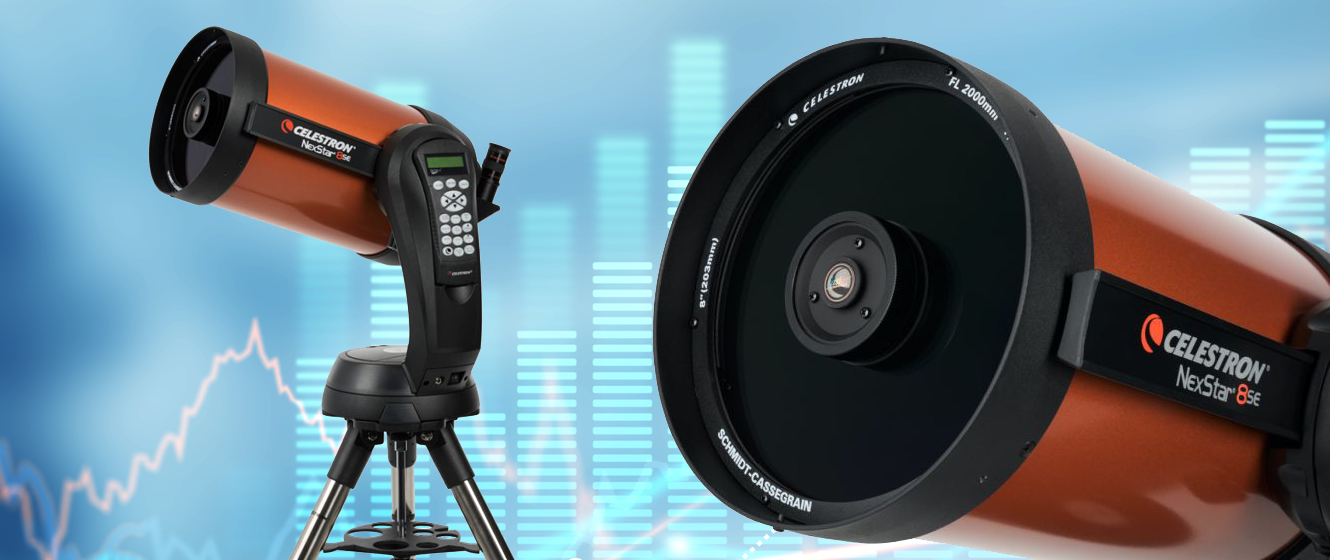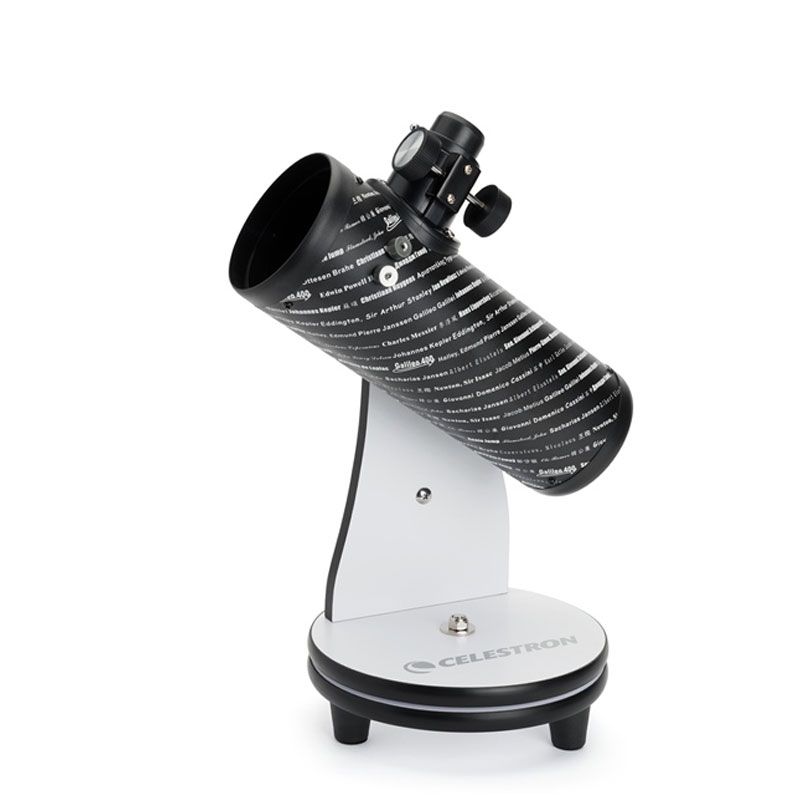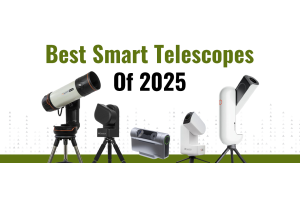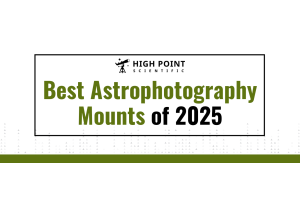
On the face of it, buying a telescope might seem like a large investment - and like all investments, it’s one that’s not without its risks. However, there are two key differences between your stock market investment and your telescope: firstly, the return on your telescope investment is measured in unique experiences, not dollars. Secondly, you decide if the value of your telescope investment goes up or down.
With this in mind, let’s review the key information you need to know before you make your buying decision.
When is a Good Time to Invest?
Before you do anything, it’s a good idea to ask yourself if now’s a good time to buy your first scope. More specifically, you should consider:
- Your level of experience
- What you want to observe
- Who will be using the telescope
- Where you want to observe
When many folks first develop an interest in astronomy, they often want to buy a telescope. After all, they’re excited to get started on their new hobby and explore the universe. However, it might not always be the best option.
Before you jump in, it’s advisable to learn more about the night sky - especially how to identify the constellations, the types of objects you’ll be able to observe, and (most importantly) how to locate them.
While it’s true that a computerized telescope can locate these objects for you, it’s worth knowing that they’re not always accurate and you may need to make adjustments to the telescope’s aim. Do you know how to locate your target? Do you know what to expect when you find it?
What will a globular cluster look like? What magnification will you need to split that double star? You might be interested in observing galaxies, but these can be faint and typically require a larger telescope. In contrast, the Moon and planets are bright, so while a larger telescope will show more detail, a small to medium-sized telescope is more than up to the task.
Tied to this is the question of who’ll be using the telescope. The same question of experience will apply if you’re considering buying a telescope for a child. They (or someone else) will need to be familiar with the night sky, plus how to observe their chosen targets.
Lastly, your sky conditions will determine what you’re able to see. More specifically, the bright lights of a town or city can drain out the fainter objects, whereas a dark rural location will allow you to see so much more. A computerized telescope won’t know if you’re in suburbia or out in the woods, and will recommend objects that might be too faint to be seen.

What Should I Invest In?
There are a bewildering number of choices when it comes to buying a first telescope, but the overriding consideration is not cost, but rather ease of use. There are three basic types of telescope:
- Refractors - these use glass lenses and produce a slightly better image, but most manufacturers won’t produce anything with a lens larger than six inches. This is for practical reasons - with larger lenses come higher costs and longer, more cumbersome telescope tubes, thereby limiting their appeal to consumers.
- Reflectors - probably the most popular type, reflectors use mirrors instead of glass lenses. This not only reduces costs but also allows for a shorter telescope tube as the light is reflected back along the tube. The required length is, therefore, cut in half. This means you can have a much larger scope that’s also typically less cumbersome and more portable.
- Catadioptric - a hybrid of refractors and reflectors, these use a combination of glass lenses and mirrors to produce a better quality image without the need for large lenses or long telescope tubes.
The type of telescope you choose is really a matter of personal preference, and can come down to cost and what you want to do with it.
One important factor to consider is the size of a telescope’s lens or mirror (known as its aperture), as this dictates how much light it can gather. The more light that can be gathered, the fainter the objects you’ll be able to see and the more detail you’ll be able to see on them.
Since reflectors can have larger mirrors, they’re able to gather more light and are better at observing faint objects.
Refractors produce slightly better images but they tend to cost more and lack the aperture of a reflector. The smaller aperture makes it harder to see fainter objects, like galaxies, but is great for observing the Moon and planets as those targets are bright in comparison.
Catadioptric telescopes have the best of both worlds - great optics and larger apertures - but they can cost more as a result.
With all this in mind, a reflector is often the best all-around choice for a beginner, but you’ll also need to consider its mount. Here, you have two choices:
- Altazimuth - these allow you to move the telescope in a simple up/down, left/right motion and they typically use a tripod or Dobsonian base (see below).
- Equatorial - these are more complicated, as they need to be correctly aligned and weighted first. Equatorial mounts use a tripod base.
Of the two, altazimuth mounts are the easiest to use and are probably best suited to the beginner, but despite their popularity, they have a minor flaw: they can’t easily follow an object as it rises and sets.
Many of the objects you’ll want to observe will rise at an angle and then set at an angle. Unless your scope is computerized, an altazimuth scope is unable to both tilt and turn at an angle. It can tilt, but since its movements are simply up/down and left/right, it can’t follow the path of the object as it rises and sets.
As a result, you’ll see your target slowly drift across your eyepiece field of view as it rises or sets, and you’ll need to make regular adjustments to keep it centered.
An equatorial mount resolves this issue by tilting the telescope at the proper angle so that it matches the rising and setting angle of the object. That way, you only need to nudge your telescope to the left or right to track your target. The downside is that the telescope needs to be properly aligned before use, which can be confusing for beginners.
An altazimuth mount, then, seems like a good idea, and if you’re considering a reflector telescope, you should also consider a Dobsonian base for it. This design, popularized by the amateur astronomer John Dobson, is about as simple and easy to use as you can get.
The scope sits in a cradle which allows it to be tilted and aimed at your target in the sky. In turn, the cradle sits upon a rotating base that allows you to turn the telescope to the left and to the right.
Besides being super-easy to use, one of the best things about a Dobsonian is that there’s very little set-up required. Once it’s assembled, you only have to carry it outside and point it at your target.
How Much Should I Invest?
Telescopes can vary wildly in price, depending upon size, type, target audience, and manufacturer. For example, at one end of the price spectrum, Celestron produces the FirstScope, a compact, portable scope that’s great for both young astronomers and beginners alike.
At the opposite end of the price range is the Celestron 36 cm RASA V2 OTA, a high-end scope designed for serious amateur astronomers and astrophotographers with access to dark skies.
Everything else, of course, is somewhere in-between, and how much you choose to invest is really up to you. Perhaps the most overriding factor is the dedication of the person using the scope; will they continue to use it at every opportunity or will they lose interest after the novelty wears off?
If you’re buying the scope for a younger, aspiring astronomer, it’s often a good idea to learn how to use it yourself. That way, you can share the experience and encourage them further. It’s also a good idea to have a list of favorite targets and challenge yourself to find something new every time you go out.
If you’re looking for something more than the FirstScope but don’t want to invest too much, there are some excellent options for the budget-conscious. You can check out our recommendations, or contact our gear experts for some impartial advice from our team.

What Will Be the Return on My Investment?
There are thousands of sights you can observe with a telescope, from the Moon and our nearest planetary neighbors to more distant stars, nebulae, and far-flung galaxies. Each one is unique and has something special to offer. Each one has its own challenges and will reveal different secrets to different observers with different equipment.
Time, like money, is an investment, and just like the stock market, time will ultimately determine the value of your return. The more time you spend outside with your telescope, the more you’ll see. You’ll find and identify more objects, and you’ll learn how to price details out of the objects you view on a regular basis. Some objects will become favorites, and they’ll continue to pay dividends over the years.
Ultimately then, as with almost every endeavor, the return will depend upon how much time - rather than dollars - you’re willing to invest in it. You can buy the biggest telescope you can afford, hoping to see everything the universe has to offer. However, if it sits in the corner gathering dust because it’s too bulky to move and too complicated to use, then your investment has been for nothing.
Conversely, you can buy a smaller, beginner telescope and frequently take it outside to enjoy the night sky. There’s a sense of accomplishment when you’re able to track down and observe an object for the first time - especially when you’ve seen it mentioned frequently online and in books and magazines, like a celestial celebrity.
It’s a journey of discovery that’s impossible to put a price tag on and will always pay off - if you invest the time in it!

Learn More
Interested in learning more about telescopes and astronomy? Not sure where to begin? Check out our Astronomy Hub to learn more!










